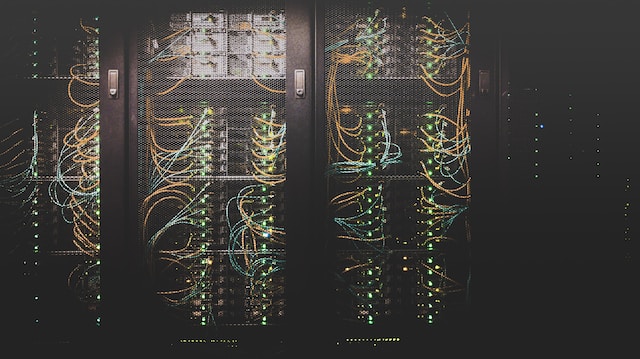How to Enhance Your IT Security with Blockchain Technology

Blockchain technology, best known as the underlying framework of cryptocurrencies like Bitcoin, offers transformative potential beyond digital currencies. Its inherent characteristics of decentralization, immutability, and transparency can significantly bolster IT security. Here’s a detailed guide on how to leverage blockchain technology to enhance your IT security.
1. Understand Blockchain Basics
Before integrating blockchain into your IT security strategy, grasp the fundamental concepts:
- Decentralization: Blockchain operates as a distributed ledger, where data is stored across a network of nodes rather than a centralized server. This decentralized structure reduces single points of failure and enhances resilience against attacks.
- Immutability: Once data is recorded in a blockchain, it cannot be altered or deleted without consensus from the network. This immutability ensures data integrity and provides a tamper-proof record of transactions.
- Transparency: Transactions on a blockchain are visible to all participants within the network, promoting transparency and accountability.
2. Secure Data Transactions
Blockchain can improve the security of data transactions:
- Cryptographic Security: Blockchain employs cryptographic algorithms to secure data. Each block contains a unique hash of the previous block, creating a chain of blocks that is resistant to tampering. This ensures that any attempt to alter a transaction would require changing all subsequent blocks, which is computationally impractical.
- Smart Contracts: Utilize smart contracts—self-executing contracts with terms directly written into code—to automate and enforce contractual agreements securely. Smart contracts reduce the need for intermediaries and minimize the risk of fraud.
3. Enhance Identity and Access Management
Blockchain technology can strengthen identity and access management:
- Decentralized Identity: Implement decentralized identity systems that allow individuals to control their digital identities without relying on a central authority. Users can verify their identity using cryptographic proofs, reducing the risk of identity theft and fraud.
- Access Control: Use blockchain to manage and verify access permissions in a decentralized manner. This approach ensures that access controls are transparent and tamper-proof, reducing the risk of unauthorized access.
4. Improve Data Integrity
Maintaining data integrity is crucial for IT security:
- Immutable Logs: Use blockchain to create immutable logs of data changes and access. These logs provide a reliable audit trail, making it easier to detect and investigate data breaches or unauthorized changes.
- Provenance Tracking: Implement blockchain for tracking the provenance of data. This ensures that data origins are traceable and that any modifications are recorded, enhancing trust and integrity.
5. Secure Supply Chain Management
Blockchain can enhance supply chain security:
- Transparency and Traceability: Utilize blockchain to create transparent and traceable records of goods and transactions across the supply chain. This helps in verifying the authenticity of products, reducing the risk of counterfeiting, and ensuring compliance with regulations.
- Smart Contracts for Automation: Automate supply chain processes using smart contracts to enforce terms and conditions automatically. This reduces manual errors and enhances security by ensuring that all parties adhere to predefined rules.
6. Defend Against Cyber Attacks
Blockchain technology offers several defensive mechanisms against cyber threats:
- Distributed Denial-of-Service (DDoS) Protection: Use blockchain-based solutions to distribute network traffic across multiple nodes, mitigating the impact of DDoS attacks.
- Decentralized Storage: Implement decentralized storage systems that distribute data across multiple nodes, making it more difficult for attackers to compromise the entire system.
7. Enhance Network Security
Blockchain can contribute to more robust network security:
- Decentralized Security Models: Adopt decentralized security models where multiple nodes validate and verify transactions. This approach enhances security by eliminating reliance on a single point of control and reducing vulnerabilities.
- Consensus Mechanisms: Leverage blockchain’s consensus mechanisms, such as Proof of Work (PoW) or Proof of Stake (PoS), to validate transactions and secure the network against malicious activities.
8. Integrate with Existing Security Solutions
Blockchain can complement existing security measures:
- Hybrid Security Approaches: Combine blockchain with traditional security solutions such as firewalls, encryption, and intrusion detection systems to create a multi-layered security strategy.
- Interoperability: Ensure that blockchain solutions integrate seamlessly with existing IT infrastructure and security protocols. This helps in maintaining a cohesive and effective security posture.
9. Stay Updated with Regulations and Standards
Adopt blockchain in compliance with relevant regulations:
- Regulatory Compliance: Stay informed about regulations and standards related to blockchain technology. Ensure that your implementation complies with legal and industry-specific requirements to avoid legal and operational issues.
- Best Practices: Follow best practices for blockchain security, including regular audits, updates, and vulnerability assessments.
Conclusion
Blockchain technology offers significant advantages for enhancing IT security through decentralization, immutability, and transparency. By securing data transactions, improving identity and access management, maintaining data integrity, and defending against cyber threats, blockchain can play a crucial role in strengthening your overall security strategy. Integrating blockchain technology with existing security measures and staying updated with regulations will ensure a robust and resilient IT security framework. As blockchain continues to evolve, its potential to transform IT security will grow, providing new opportunities for safeguarding digital assets and operations.




